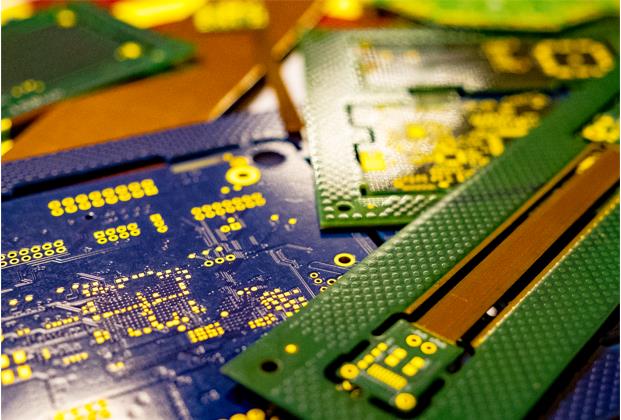The Japan Institute of Industrial Technology and the Japan Institute of Advanced Technology have cooperated to develop a high-strength heterogeneous material bonding technology that can produce flexible printed circuit boards (FPC) for high-frequency applications.
FPC uses copper foil (FCCL: Flexible Copper Clad Laminate) on one or both sides of the polymer film, but it needs a method that can make the copper foil and polymer film high-strength bond, so that the high frequency can be transmitted. The signal loss is small and smooth. The current FCCL method used to improve the bonding strength is to roughen the surface of the copper foil, and then use an adhesive to bond the polymer film on the rough uneven surface, or to directly bond the heated polymer surface to the copper foil (anchor effect) ). However, the use of adhesives has a series of problems such as durability issues, poor transparency of joined parts, and deterioration of adhesives over time. In addition, since high-frequency signals pass through the surface of the wiring, the unevenness on the surface of the copper foil will increase the transmission distance and increase the transmission loss.
This time, the R&D team used chemical nano-coating technology based on ultraviolet light irradiation to introduce oxygen-containing functional groups on the surface of the polyester film, the polymer film used for FPC. Through detailed analysis of the surface of the polymer film and copper foil before and after bonding, the bonding mechanism was clarified, and a surface chemical structure with high reactivity with the copper foil was constructed using the analysis results.

Regarding the oxygen-containing functional group introduction technology, the polyester film and the oxidizing agent are coexisted and irradiated with ultraviolet light, so that oxygen-containing functional groups such as hydroxyl groups that are firmly fixed by covalent bonds can be efficiently introduced on the surface of the polyester film. Conventional oxygen-containing functional group introduction technologies include oxygen plasma treatment, ozone treatment, and corona discharge treatment, but there are problems such as the need to use large-scale equipment, damage to the polymer film, and surface modification characteristics that change over time. The chemical nano-coating method developed this time can use a simple device to efficiently introduce oxygen-containing functional groups, use less oxidant, and last longer for surface modification characteristics.
The oxygen-containing functional group-introduced polyester film and copper foil are hot-pressed, and the oxygen-containing functional groups on the surface of the polyester film are firmly bonded to copper through a chemical reaction, thereby achieving high-strength bonding without the use of adhesives. Figure 1 compares the bonding strength with the conventional technology and shows the bonding method this time. Since a large number of oxygen-containing functional groups are directly bonded to the copper foil, the peel strength indicating the bonding strength exceeds the development target value (JPCA standard: 0.7 N/mm or more).
The PCB board produced by the bonding technology developed this time has no unevenness on the surface of the copper foil, so even if the signal is transmitted through the surface of the copper wiring at a high frequency, the transmission distance will not be extended. It is expected to be applied to the 5th generation communication (5G) printed circuit board with low transmission loss and excellent characteristics.